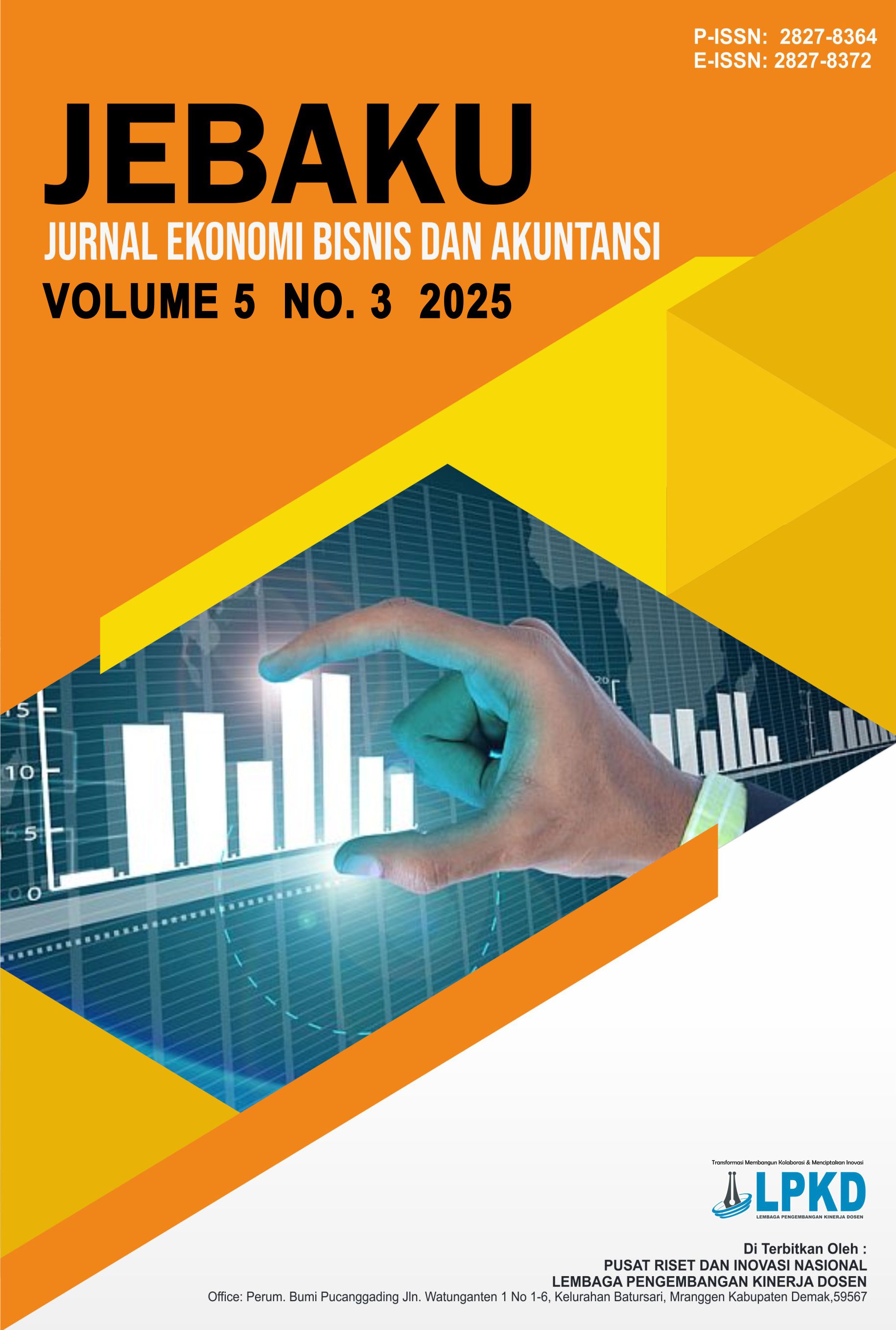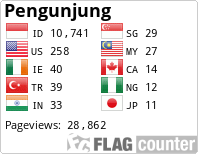Pengaruh Jumlah Uang Beredar dan Inflasi terhadap Pertumbuhan Ekonomi Indonesia
DOI:
https://doi.org/10.55606/jebaku.v5i3.5992Keywords:
Economic activity, Economic Growth, Inflation control, Inflation, Money SupplyAbstract
This study aims to investigate the impact of money supply and inflation on economic growth in Indonesia. The research adopts a quantitative approach, utilizing secondary data sourced from relevant financial reports and statistical agencies. Multiple linear regression analysis is employed to evaluate the relationship between the independent variables (money supply and inflation) and the dependent variable (economic growth). The data is processed using SPSS (Statistical Package for the Social Sciences) version 25. The findings indicate that the money supply has a significant positive effect on Indonesia's economic growth, suggesting that an increase in money supply can stimulate economic activity. On the other hand, inflation is found to have a positive but insignificant effect on economic growth. The results of the hypothesis testing indicate that, when considered simultaneously, both money supply and inflation contribute to economic growth, but the impact of inflation is less pronounced. These findings have important implications for policymakers in Indonesia, suggesting that managing the money supply is crucial for fostering economic growth, while inflation control remains important but less directly impactful in the short term.
Downloads
References
Abadi, M. T. (2022). Ekonomi moneter: Sebuah pengantar.
Apriani, H., & Putri, R. (2021). Pengaruh jumlah uang beredar terhadap pertumbuhan ekonomi di Indonesia. Jurnal Ekonomi Pembangunan, 12(1), 25-34.
Astiyah, S. (2009). Inflasi. Jakarta: Pusat Pendidikan dan Studi Kebanksentralan (PPSK), Bank Indonesia.
Boediono. (2016). Teori pertumbuhan ekonomi. Yogyakarta: BPFE.
Creswell, J. W. (2014). Research design: Qualitative, quantitative, and mixed methods approaches (4th ed.). Sage Publications.
Dwiantoro, D. (2004). Analisis determinan inflasi di Indonesia dengan Engel-Granger error correction model. Jurnal Ekonomi dan Manajemen, 2(1), 45-60.
Fisher, I. (1911). The purchasing power of money. Macmillan.
Ghozali, I. (2018). Aplikasi analisis multivariate dengan program IBM SPSS 25. Badan Penerbit Universitas Diponegoro.
Julian. (2017). Uang dalam pandangan Islam. Jurnal Ekonomi dan Keuangan Syariah, 3(2), 217-230. https://doi.org/10.29313/amwaluna.v1i2.2583
Keynes, J. M. (1936). The general theory of employment, interest, and money. Macmillan.
Komalasari, A., Fatmasari, D., & Suharto, T. (2024). Pengaruh jumlah uang beredar, tingkat inflasi, dan suku bunga terhadap pertumbuhan ekonomi di Indonesia. Jurnal Ekonomi Bisnis Antartika, 2(1), 1-10. https://doi.org/10.70052/jeba.v2i1.245
Lubis, I. F. (2017). Analisis antara inflasi dan pertumbuhan ekonomi: Kasus Indonesia. QE Journal, 3(1), 44-55. https://doi.org/10.24114/qej.v3i1.17443
Sugiyono. (2013). Metode penelitian kuantitatif, kualitatif, dan R&D. Alfabeta.
Sukirno, S. (2016). Teori ekonomi makro. Raja Grafindo Persada.
Syafwah, N., Lestari, F., & Hasan, M. (2019). Analisis pengaruh inflasi terhadap pertumbuhan ekonomi di Kota Makassar. Jurnal Ilmiah Ekonomi Pembangunan, 3(2), 56-65. https://doi.org/10.22437/jels.v7i2.11930
Utami, D., & Prasetyo, A. (2022). Inflasi, jumlah uang beredar, dan pertumbuhan ekonomi: Studi empiris di Indonesia. Jurnal Ekonomi Makro Indonesia, 5(1), 78-90.
Downloads
Published
How to Cite
Issue
Section
License
Copyright (c) 2025 Jurnal Ekonomi Bisnis dan Akuntansi

This work is licensed under a Creative Commons Attribution-ShareAlike 4.0 International License.










